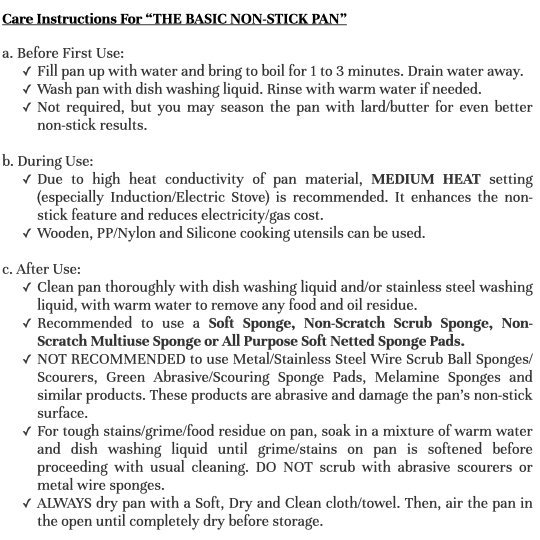Care & Safety Instructions
Select Product:
Always ensure you put on insulated tool gloves to protect your hands.
Protect your face/eyes with proper face shields and/or goggles when using any electric tools.
Use the tool away from combustibles, flammables and/or ignition sources.
Practise safety distance from others in the vicinity when tool is powered up and always point the tool away from people.
Store electric tools in a dry place when not in use.
Do not use electric tools in damp or wet locations.
Keep work areas well lighted when operating electric tools.
Always turn off the power when not in use.
When using a high-velocity tool, do not drive screws/fasteners more than 3 inches (7.62 centimeters) from an unsupported edge or corner of material such as brick or concrete.
When using a high velocity tool, do not place screws/fasteners in steel any closer than 1/2-inch (1.27 centimeters) from an unsupported corner edge unless a special guard, fixture, or jig is used.
Do not drive screws/fasteners into material that would allow the screw/fasteners to pass through to the other side.
Do not drive screws/fasteners into very hard (that is out of recommended material type range) or brittle material that might chip or splatter or make the screws/fasteners ricochet.
More questions? Read product FAQs HERE.
Care Instructions for The Ergonomic Chair Series
Keep sharp objects and tools away from the Mesh material.
As the chair composes of many moving parts, check and tighten the screws regularly to keep chair in its best working condition.
Vacuum your seat and backrest once a month to keep it clean. Alternatively, you may consider placing a thin pure-cotton, linen or tencel cloth over the seat and backrest, which can be washed.
Use pH-neutral soap diluted with water and a clean cloth, or wet wipes, to clean the Nylon or Metal parts of the chair.
Do not use the chair for storage purpose to stack heavy goods/boxes on. This will create unnecessary and excessive pressure on the pneumatic rod which, as a result, may be damaged.
Please always be mindful of safety when using any roller-wheel chair, especially when reclining.
Please through these information for proper and safe use of chair as well: https://homledj.com/product-faqs/
Note: HOMLÈDJ shall be in no way liable for Death or personal injury resulting from negligence or improper and incorrect use of the chair other than its intended use as an office/desk/study chair for purposes of the user sitting at an office table/desk/study table.
Always hold onto side rails when climbing.
Step on the black non-slip mat on steps when climbing, not on the step’s frame.
Never place your foot in the middle of the step. Place left foot on left of step and right foot on right of step. This is to ensure weight is properly distributed between the main supporting beam under each step and the connecting main frame. .
When climbing up and down the ladder, ensure the body is in a good upright posture, keeping it near the middle of the steps or rungs and land lightly on each feet after you have found a stable footing on either the left or right side of the step. Do not sway/rock from side to side while ascending/descending and/or stomp/overexert landing pressure/execute a hard landing on each step taken. These will help to ensure the user’s weight is properly distributed between the main supporting beams under the steps and the connecting main frame.
Take note of weight bearing when using. Do not exceed the maximum load rating of a ladder. Be aware of the ladder’s load rating and of the weight it is supporting, including the weight of any tools or equipment.
** RECOMMEND UP TO 75KG PER STEP, INCLUDING WEIGHT OF CLOTHES/PROTECTIVE GEARS, TOOLS/SUPPLIES USER IS CARRYING, AND TOOLS/SUPPLIES PLACED ON THE LADDER STEP**
FOR REFERENCE ONLY, PLEASE DO NOT HAVE MORE THAN 1 PERSON ON LADDER OR EXCEED EACH STEP’S WEIGHT BEARING: >COMBINED MAX BEARING OF STEPS 300KG (4 Steps), 375KG (5 Steps); >OVERALL FRAME BEARING 450KG
Keep ladder away from excessive heat (as in the case of fire) and corrosive substances such as acids or alkali as these substances may cause chemical corrosion and a resulting reduction in strength.
Other materials must not be placed on the ladder while it is in storage.
The ladder requires level ground support for all four of its side rails when in use.
In order to prevent tipping the ladder over sideways due to over-reaching, the user must climb or work with the body near the middle of the steps or rungs.
Never attempt to move the ladder without first descending, relocating the ladder, and then re-climbing.
In an effort to avoid losing your balance and falling off the ladder, it is recommended not to use the top step when operating alone. If need be, have another person on ground to hold onto the ladder firmly as you work from the top step.
Do not attempt to mount the ladder from the side or step from one ladder to another unless the ladder is secured against sideways motion.
Avoid electrical hazards! – Look for overhead power lines before handling a ladder. Avoid using a metal ladder near power lines or exposed energized electrical equipment.
Always maintain a 3-point (two hands and a foot, or two feet and a hand) contact on the ladder when climbing. Keep your body near the middle of the step and always face the ladder while climbing.
Ladders must be free of any slippery material on the rungs, steps or feet.
Do not use the ladder as a single ladder or in a partially closed position.
Do not place a ladder on boxes, barrels or other unstable bases to obtain additional height.
More questions? Read product FAQs HERE.




